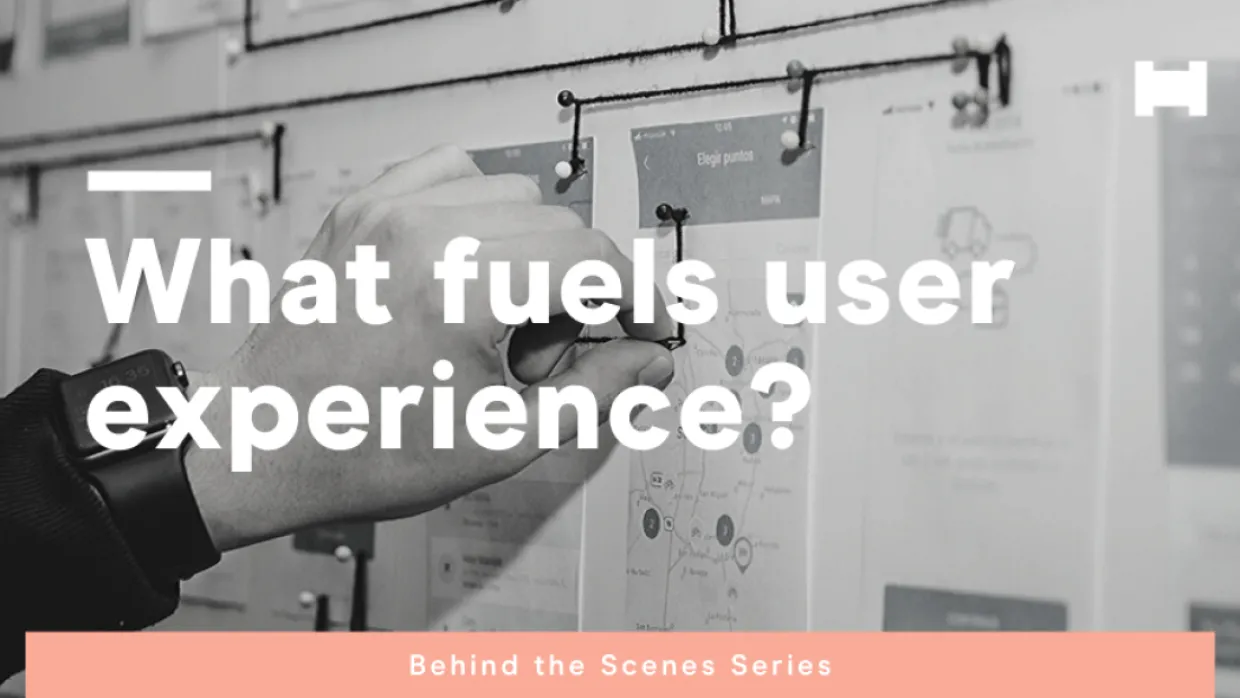Digital strategy
Behind the Scenes: What fuels user experience?

What are the secrets behind a great user experience? When it comes to strategizing and redesigning websites, portals and apps, how do you balance business goals and customer needs? When should you push the envelope—and when should you play it safe? To fill you in on the tips and tricks of the trade, Horizontal Digital’s UX team synced up for a roundtable discussion.
What fuels UX strategy?
The first step of a successful UX strategy and design process is to identify the problems you’re trying to solve. You talk to the client to learn about their wants and needs. You conduct primary research by going directly to the users. And based on the feedback, you craft a solution that aligns both audiences.
Buck Winfield, Associate Director, UX:
Without identifying business challenges and user needs, you're just throwing something out there and seeing what sticks. Instead of spending your technology budget on a new website and hoping it works, it’s important to check your assumptions against other people’s assumptions to make informed decisions.
To me, one of the most exciting things about UX is the focus on personalization. How are we figuring out the different personas that are coming to our site? What are the paths they're trying to take? How can we structure the site to meet their specific needs? To account for different perspectives, we often look at multiple approaches to solving the same thing.
What fuels UX design?
Once you’ve done your research and understand the problems you’re trying to solve, it’s time to visualize the layout and design. To tailor the design to your client, factor in their needs as well as your budget and timeline. As you start designing, be sure not to forget about the user experience of your third audience—the content manager. Make sure it’s easy for marketers and business users to input information and manage their sites.
Kathryn Deming, Senior UX Designer:
With some clients you can really push creative web design. With others you can’t. For example, if you’re trying to access your healthcare information, you just need a simple interface to figure out your deductible.
For one of our clients, we're building a totally new way to package, write and build their content. We're putting content in front of their members and learning how they want to consume it. And then we filter the feedback through the lens of business requirements and best practices. This client is a healthcare research firm, so we’re not looking to build components that are too complex. But we might try to enhance the user experience with interactive design elements.
How do you find the balance between usability and innovation?
Creative and complex or simple and straightforward? Ultimately, everything you design should have a purpose. Don't just add features to a website because they look cool. Add features that make it easier for users to navigate the interface.
Keep in mind that a successful design process should be iterative—put things in front of your client as you build them and make changes if you get feedback that you’re not on the right track.
Sydney Davis, UX Designer:
From a usability perspective, you shouldn’t reinvent something unless it absolutely needs to be. There’s still room for innovation—there absolutely should be—but you don’t have to reinvent the wheel on every single project. Use buttons and menus that are familiar and easy to navigate.
If a client has unlimited time and budget, we can build them a custom library of CMS components to do anything they want. But in reality, efficiency and reusability are big factors. Unless crazy interaction design is the point of your website, you almost never want to go that route because it's hostile to navigate. But if you figure out how to make it super intuitive, you’ve broken the mold in a great way.
Is UX an art or a science?
To thrive in the user experience field, you need to wear multiple hats. Since primary research is the backbone of UX strategy, a designer must gather data and test users with the panache of a lifelong scientist. But when it’s time to map things out and solve problems, the job requires creativity and instinct.
Buck:
UX is 100% an art and a science. But I also think all science is art anyway. Every scientific discovery starts with an artistic hypothesis—where you speculate about the way something should be. But you still have to craft it and use science to prove it.
How do new technologies like VR, IoT and AI impact UX?
Wearables and smart appliances are taking user experience beyond the screen. And as artificial intelligence develops, users can enjoy a personalized experience without a person on the other end. As computers and technology devices evolve, the UX field is destined to see increasing opportunities for innovation. At Horizontal, we’ve started to delve into emerging technology to set the bar higher for our clients.
Kathryn:
For one client, we developed an Alexa app to check your hearing. We recorded different tones and asked if people could respond to those tones. It’s designed to help people who have tinnitus or other types of hearing loss. Another opportunity is an AR app that could help users in the commercial real estate space take a virtual tour. We've also started to research chatbots for this client. However, since they’re global, we’d have to build something for 70 different countries and 27 languages. Having a chat bot is brilliant, but we’d have to start with what we know—English—and move from there to reach the most clients.
Buck:
Most of our clients come to us with a need for a platform or CMS enhancement, so things like VR aren’t typically on their radar. Our challenge is identifying opportunities to use new technologies in valuable ways. We just have to push that further with our clients and find useful needs.